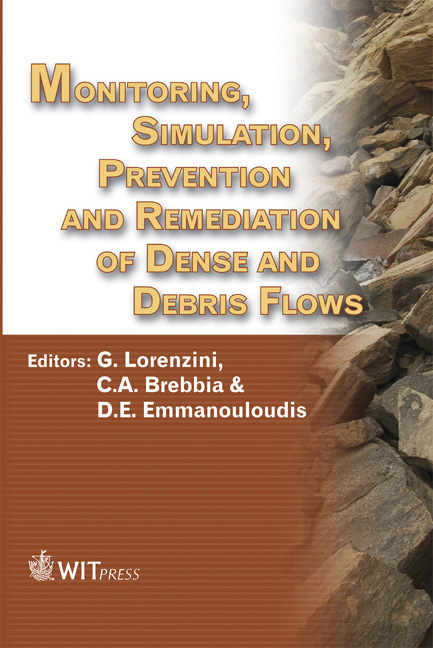Comparison Of 1D Debris Flow Modelling Approaches Using A High Resolution And Non-oscillatory Numerical Scheme Based On The Finite Volume Method
Price
Free (open access)
Transaction
Volume
90
Pages
10
Published
2006
Size
676 kb
Paper DOI
10.2495/DEB060061
Copyright
WIT Press
Author(s)
C. Rodríguez, A. Blanco & R. García
Abstract
The modelling of debris flow kinematics and mechanics is complex and involves non-linearity at both levels. Until now, the preferred approach in numerical modelling of debris flows is to solve the 1D equations with a Finite Difference method. In order to improve the present debris flow models, we implement a finite volume method stable for Courant numbers up to unity. Mass and Momentum equations are computed using a Roe-type Riemann solver and the MUSCL (Monotone Upwind Schema for Conservation Laws) approach is applied to obtain second order spatial accuracy. Different resistance laws are used for taking account the rheological behaviour of the fluid, considered as a single phase or by a liquid-solid mixture. The scheme is validated and applied to a debris flow event in Japan. The results show important differences in precision when the proposed model is compared with other numerical models, using the same resistance laws. Results indicate that the Newtonian turbulent Voellmy fluid and Takahashi resistance flow laws better reproduce the front propagation than other rheological models. Keywords: debris flows, debris flow, finite volume method, resistance laws, rheological behavior of mixtures.
Keywords
debris flows, debris flow, finite volume method, resistance laws, rheological behavior of mixtures.





